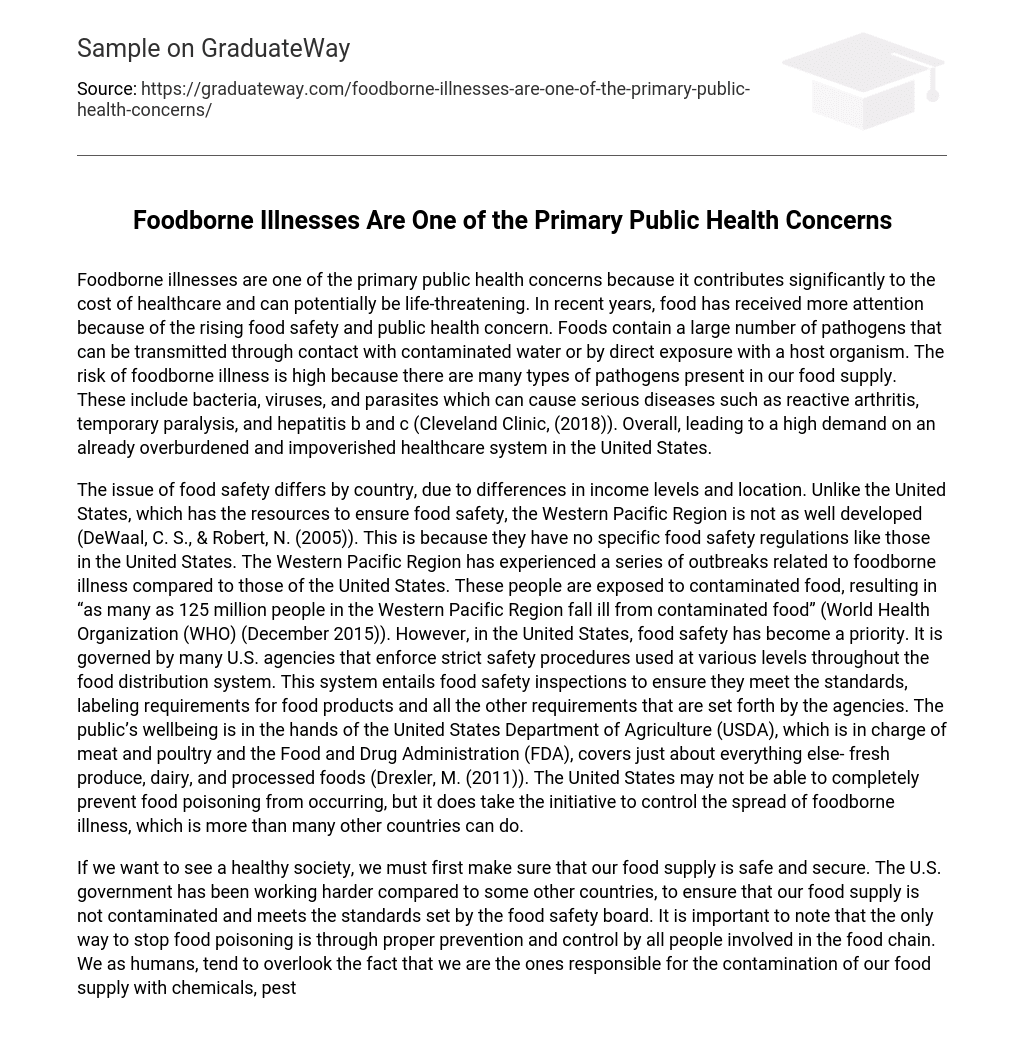Foodborne illnesses are one of the primary public health concerns because it contributes significantly to the cost of healthcare and can potentially be life-threatening. In recent years, food has received more attention because of the rising food safety and public health concern. Foods contain a large number of pathogens that can be transmitted through contact with contaminated water or by direct exposure with a host organism. The risk of foodborne illness is high because there are many types of pathogens present in our food supply. These include bacteria, viruses, and parasites which can cause serious diseases such as reactive arthritis, temporary paralysis, and hepatitis b and c (Cleveland Clinic, (2018)). Overall, leading to a high demand on an already overburdened and impoverished healthcare system in the United States.
The issue of food safety differs by country, due to differences in income levels and location. Unlike the United States, which has the resources to ensure food safety, the Western Pacific Region is not as well developed (DeWaal, C. S., & Robert, N. (2005)). This is because they have no specific food safety regulations like those in the United States. The Western Pacific Region has experienced a series of outbreaks related to foodborne illness compared to those of the United States. These people are exposed to contaminated food, resulting in “as many as 125 million people in the Western Pacific Region fall ill from contaminated food” (World Health Organization (WHO) (December 2015)). However, in the United States, food safety has become a priority. It is governed by many U.S. agencies that enforce strict safety procedures used at various levels throughout the food distribution system. This system entails food safety inspections to ensure they meet the standards, labeling requirements for food products and all the other requirements that are set forth by the agencies. The public’s wellbeing is in the hands of the United States Department of Agriculture (USDA), which is in charge of meat and poultry and the Food and Drug Administration (FDA), covers just about everything else- fresh produce, dairy, and processed foods (Drexler, M. (2011)). The United States may not be able to completely prevent food poisoning from occurring, but it does take the initiative to control the spread of foodborne illness, which is more than many other countries can do.
If we want to see a healthy society, we must first make sure that our food supply is safe and secure. The U.S. government has been working harder compared to some other countries, to ensure that our food supply is not contaminated and meets the standards set by the food safety board. It is important to note that the only way to stop food poisoning is through proper prevention and control by all people involved in the food chain. We as humans, tend to overlook the fact that we are the ones responsible for the contamination of our food supply with chemicals, pesticides and other harmful substances that we incorporate and use into our daily lives. Our health depends on ourselves and our abilities to make sure that the safety of our food supply is maintained and if we do nothing about our food safety then we will be left with a foodborne illness.





